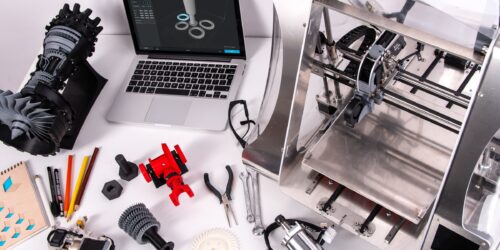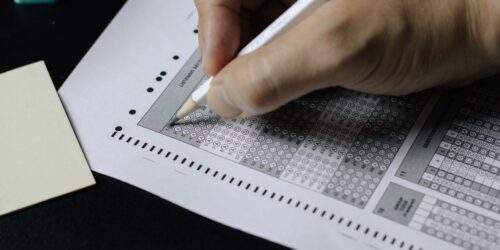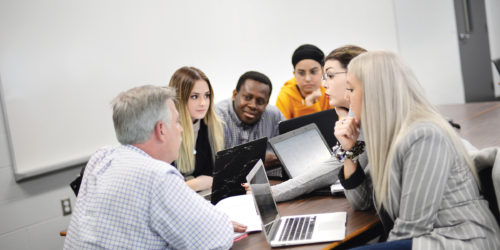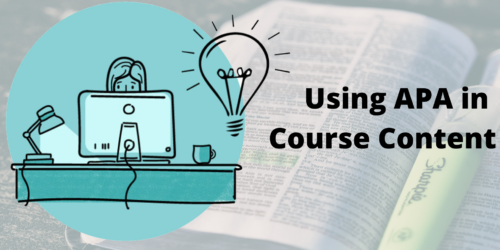
Getting Creative with Assessment Design
Where you find yourself
Are you building an assignment from the ground up while creating or revising a course outline? Or perhaps you’re looking to refresh an assignment you’ve taught before? In this Hub post, we’ll explore some options and considerations for creative and untraditional assessment design.
Traditional assessments . . . and the “untraditional”?
Midterms, exams, essays, and multiple-choice questions remain some of the most prevalent types of summative assessment in post-secondary courses. These traditional approaches to assessment have a place in gathering evidence of learning in specific contexts, say in a student’s ability to research and formulate an argument about a topic (the essay) or memorize and correctly identify parts of a complex system (multiple-choice questions). Oftentimes, traditional summative assessments are characterized by the requirement that students memorize, mirror, or repeat knowledge conveyed through instruction.
So, what does an “untraditional” assessment look like? How does creativity show up in assessment design while maintaining rigour and validity in measuring learning?
Think of the most creative or unusual assessment you’ve ever done as a student. What were you asked to do? I remember a portfolio project I compiled in an English course, representing my understanding of the tragedy Romeo and Juliet in a series of artifacts I created. I was asked to choose from a menu of artifacts to create, such as a letter from Juliet to Romeo and a map of Verona, the city in which Shakespeare’s play is set. In the weeks leading up to the assignment due date, we practiced preparing components of the portfolio in class. Ultimately, I had freedom to design my portfolio according to my interests and strengths, but the assignment was assessed according to a single rubric.
Creative or untraditional assessments like my Romeo and Juliet portfolio tend to:
- Offer learners choice (for example, in topic and the deliverable to be submitted).
- Ask for deliverables that represent what the student believes they have learned, rather than memorizing or repeating what was taught.
- Invite learners to present their learning in creative and dynamic ways, often using multiple media (e.g., written, spoken, visual, audio, embodied).
- Include scaffolded and formative components, so the summative deliverable reflects learning over time (e.g., a pilot for a podcast episode, a plan for a graphic narrative, a proposal for a social media post etc.).
Such an approach to assessment design centres the learner. By offering choice and diversity in assessment options, students have more equitable opportunities to express their learning. Choice and diversity can also cultivate learner agency and creativity. Finally, a scaffolded approach shifts the emphasis to demonstrations of learning over time, which allows students to adjust learning strategies and experiment in how they approach an assessment task.
Examples of creative assessments
Here are some assessment ideas: what would you add to this list?
| Advertisement or social media post | Annotated map | ArcGIS StoryMap |
| Autobiographical sketch | Description of a process | Dialogue |
| Editorial | Flowchart/decision tree | “Found” artifact |
| Funding proposal | Graphic narrative | How-to video |
| Illustrated chronology | Infographic | Interview |
| Introduction to an assignment – but don’t complete the rest of the assignment | Journal entry of a historical figure | Movie review |
| News story | Origin story | Patient narrative |
| Pitch for a pilot episode of a TV show | Podcast episode | Poem, song lyrics |
| Policy or law in response to an ethical dilemma | Postcard from significant person or historical figure | Role play |
| Story of a material object | Taxonomy/set of categories | Three-minute thesis |
Thinking through assessment (re)design: A checklist of considerations
As you get started in your assessment design, you might consider the following:
- Clarify what’s being assessed. What Course Learning Outcomes are being assessed in this assignment?
- What evidence of learning would you like to see students provide in this assignment? What evidence do you need that learning is happening? What will students submit (i.e., the deliverable)?
- What options might you provide to students to demonstrate their learning?
- Inspired by a Universal Design for Learning (UDL) approach, you might consider options in terms of how students engage with the assessment (e.g., methods of completing it, topic pathways) and represent their learning (e.g., different deliverables).
- What are the logistics in designing the assessment and having students complete it?
- What tools, resources, or skills will students need to complete the assessment? Do students have equal access and baseline knowledge given these parameters? If not, how might barriers be removed?
- What aids are students permitted or encouraged to use in completing the assignment? What about use of generative AI?
- How will expectations and instructions for the assessment be communicated to students?
- How will you measure success of the assessment? What does success look like qualitatively and quantitatively?
- How will the assessment be graded? Wha grading tool(s) will you use?
- The VALUE Rubric on Creative Thinking provides examples of language you might adapt in assessing creativity if your assignment asks students to demonstrate learning in untraditional ways.
- How will the assessment be graded? Wha grading tool(s) will you use?






